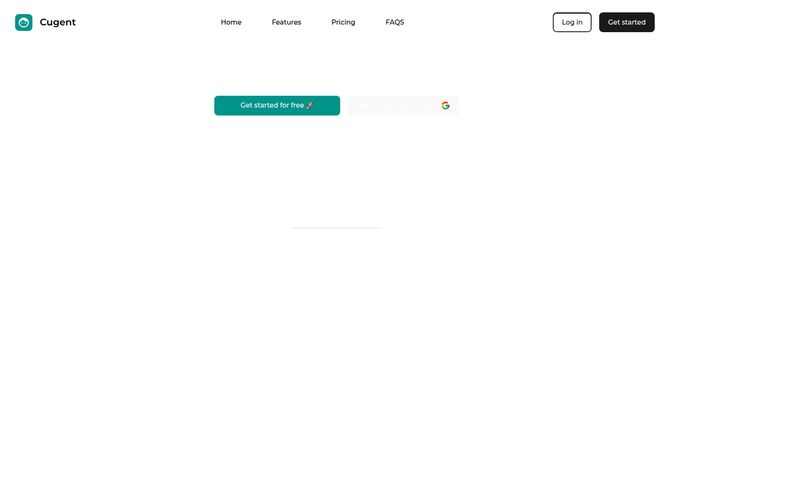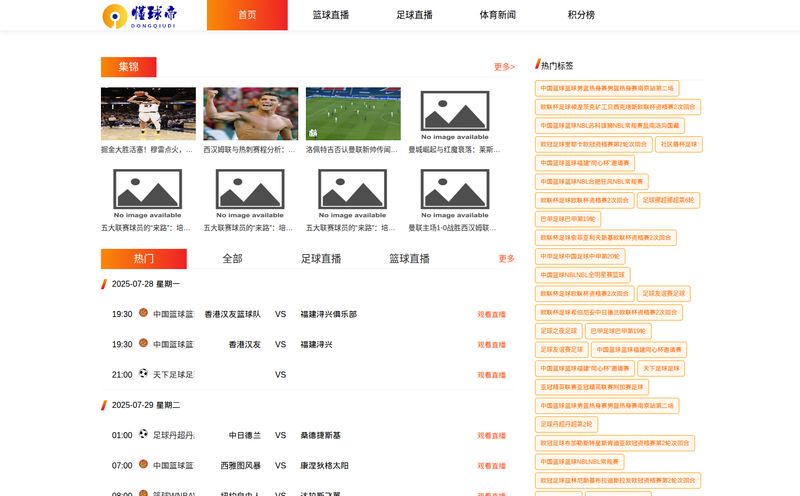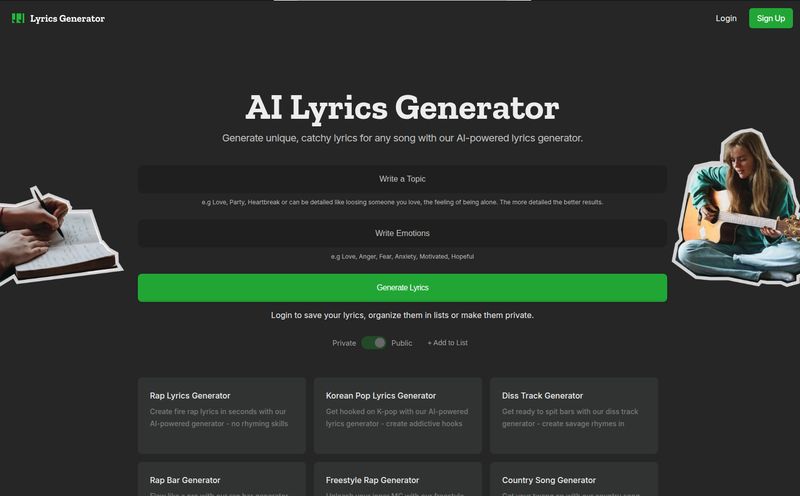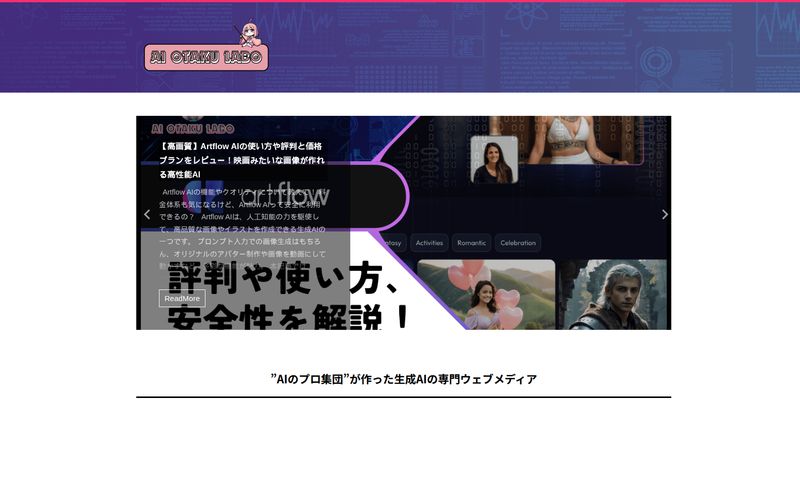I’ve been in the content game for a long time. Long enough to remember painstakingly trying to clean up fuzzy audio from a cheap lapel mic, spending hours hunting for the perfect royalty-free instrumental that didn't sound like elevator music, and wishing I could just… clone my voice for a quick YouTube voice-over on a day when I felt under the weather. It felt like science fiction. Now, it's just... a Tuesday.
The world of AI tools is exploding, and frankly, it can be overwhelming. Every week there's a new 'game-changer' that promises to revolutionize your workflow. Some are duds. Some are genuinely incredible. Today, I’m looking at one that's been making some noise in creator circles: ToneShift. Is it just another shiny object, or is it a genuinely useful tool for podcasters, musicians, and video creators? Let's get into it.
So, What is ToneShift, Really?
Forget the corporate jargon. At its heart, ToneShift is like a digital audio playground powered by some seriously smart AI. Imagine having a tool that can not only change your voice to sound like someone else but can also take your favorite song and neatly separate the singer's voice from the music. It’s a bit like having a vocal chameleon and a professional sound engineer rolled into one platform. It's built on three main ideas: transforming voices, cloning voices, and pulling apart music tracks. And honestly, the potential applications got my brain buzzing immediately.

Visit ToneShift
The Core Features: A Hands-On Look
A tool is only as good as its features, right? So let’s break down what ToneShift brings to the table.
AI Voice Cloning and Transformation
This is the headline act. The thing that gets all the attention. The idea is simple: you can use pre-made AI voice models from their community library or, with a paid plan, you can upload a clean audio sample of a voice and create a custom AI model of it. Then, you record or upload new audio, and the platform re-renders it in the cloned voice.
My first thought? Wow. This could be huge for faceless YouTube channels needing consistent narration, indie game developers on a shoestring budget who need a cast of characters, or even for podcasters who want to fix a single flubbed sentence without re-recording the whole segment. The quality? It varies. Some of the community models are a bit robotic, but with a good source file for a custom clone, the results can be surprisingly natural. It's not perfect, but its getting scarily good.
Deconstructing Tracks with Music Separation
Okay, this feature might be the unsung hero of ToneShift. If you’ve ever wanted to do a remix, create a karaoke track, or make a video essay where you talk over the instrumental of a song, you know the pain of hunting for an official acapella or instrumental. It's a nightmare. ToneShift lets you upload a full song, and its AI splits it into two tracks: vocals and instrumentals. This is a huge deal for musicians, DJs, and video editors. The ability to just grab an instrumental from almost any track is something I would have paid a lot of money for a few years ago. Now, it’s just a feature on a platform. Wild.
The Community Voice Library
ToneShift has a social element to it, where users can train and share their own voice models. On one hand, this is brilliant. It means you can log in for free and immediately have a library of voices to play with—from generic narrator voices to celebrity impressions (we'll get to the ethics of that in a minute). It lowers the barrier to entry and lets you see what’s possible without committing any cash. It’s a great way to experiment and find a style you like. But, this is also where things get a bit... murky. It's a double-edged sword, for sure.
Let's Talk Money: The ToneShift Pricing Model
Alright, the all-important question: what’s this going to cost me? ToneShift uses a “Sound Token” system, which is basically a pay-as-you-go model. You use tokens to perform actions like high-quality voice conversion or custom cloning.
Here’s a simplified breakdown of their plans:
| Plan | Price | What You Get |
|---|---|---|
| Free | $0 | 200 Sound Tokens to start. Lets you do medium-quality conversions, music separation, and use community voices. Good for a test drive. |
| Starter Pack | $4.99 | 1,000 Sound Tokens. Unlocks custom voice cloning and high-quality conversion options. The real entry point for serious users. |
| Enhancer Pack | $19.99 | 5,000 Sound Tokens. This is for power users and unlocks professional-quality cloning. A better deal on tokens if you know you'll be using it a lot. |
I have mixed feelings about token systems. On one hand, you only pay for what you use, which is great. No recurring monthly fee if you only need it for one project. On the other hand, it can be hard to predict how many tokens a project will need, which can be frustrating. For casual experimentation, the free tier is more than enough to see if you like it.
Who Is This Tool Actually Built For?
I see a few key groups getting a lot of milage out of ToneShift:
- Content Creators & YouTubers: Especially those running 'faceless' channels. The ability to generate consistent, high-quality voice-overs without having to record them yourself every single time is a massive time-saver.
- Podcasters: Need to patch a line of dialogue? Want to create a funny segment with a different voice? This is your tool.
- Musicians and DJs: The music separation feature alone is worth the price of admission. It’s an incredible tool for sampling, remixing, and creating new compositions.
- Indie Game Developers: Prototyping character voices or even using AI voices for final characters in smaller games can save thousands in voice acting costs.
The Elephant in the Room: Let's Discuss the Ethics
We can't talk about AI voice cloning without talking about the ethics. It’s the big, scary topic that looms over this entire technology. The potential for misuse—creating deepfakes, cloning someone's voice without their permission, spreading misinformation—is very real. We've already seen the debates rage across the entertainment industry, with actors' unions like SAG-AFTRA negotiating terms for AI use.
ToneShift itself seems to be just a platform, providing the tool. The responsibility, then, falls on us, the creators. My personal take? Only clone your own voice or the voice of someone who has given you explicit, enthusiastic consent. Using the tool to create a generic 'old man narrator' voice is one thing; using it to impersonate a specific person is another thing entirely. With great power comes great responsibility, and this is some pretty powerful tech. Don't be a jerk.
Conclusion: My Final Verdict on ToneShift
So, is ToneShift a gimmick or a godsend? I think the answer is... it's a bit of both, and it depends entirely on who you are. The technology is undeniably impressive and feels like a glimpse into the future of content creation. The music separation feature is a standout winner for me, a truly practical tool that solves a common problem.
The voice cloning is powerful but walks a fine line between incredibly useful and ethically questionable. The token-based pricing is flexible but can be unpredictable. If you're a creator who is curious about what AI can do for your audio workflow, signing up for the free tier is a no-brainer. It's fun to play with and the possibilities are exciting. For serious production work, I'd say the Starter Pack is the true test. For $5, you can find out pretty quick if this tool will become an indispensable part of your creative toolkit. It's a fascinating piece of tech in a rapidly changing world.
Frequently Asked Questions (FAQ)
- Is ToneShift safe and legal to use?
- The platform itself is a legal tool. However, the legality of how you use it depends on you. Cloning your own voice is perfectly fine. Cloning another person's voice without their explicit permission could have serious legal and ethical consequences. Always prioritize consent.
- How good is the voice cloning quality on ToneShift?
- It varies. The quality is highly dependent on the source audio you provide for custom cloning. A clean, high-quality recording with no background noise will produce a much more realistic result than a noisy, low-quality sample. The community voices can also be hit-or-miss.
- Can I really separate any song into vocals and instrumentals?
- For the most part, yes. The AI is very effective at separating standard song structures. However, for extremely complex or experimental tracks with heavy vocal effects and processing, the separation might not be perfectly clean. It's impressive, but not flawless magic.
- Are the Sound Tokens a one-time purchase or a subscription?
- The token packs (Starter and Enhancer) are one-time purchases. They are not a recurring monthly subscription. You buy a bundle of tokens and use them as needed, which is great for project-based work.
- Can I use the AI voices I create for commercial projects?
- This is a critical question. If you clone your own voice, yes, you own the output and can use it commercially. If you use a community voice, you'd need to check the permissions set by the user who uploaded it. When in doubt, creating your own custom voice model is the safest bet for commercial work.
Reference and Sources
- ToneShift Official Pricing Page
- SAG-AFTRA AI Resources - For context on the ongoing industry conversation about AI in entertainment.



